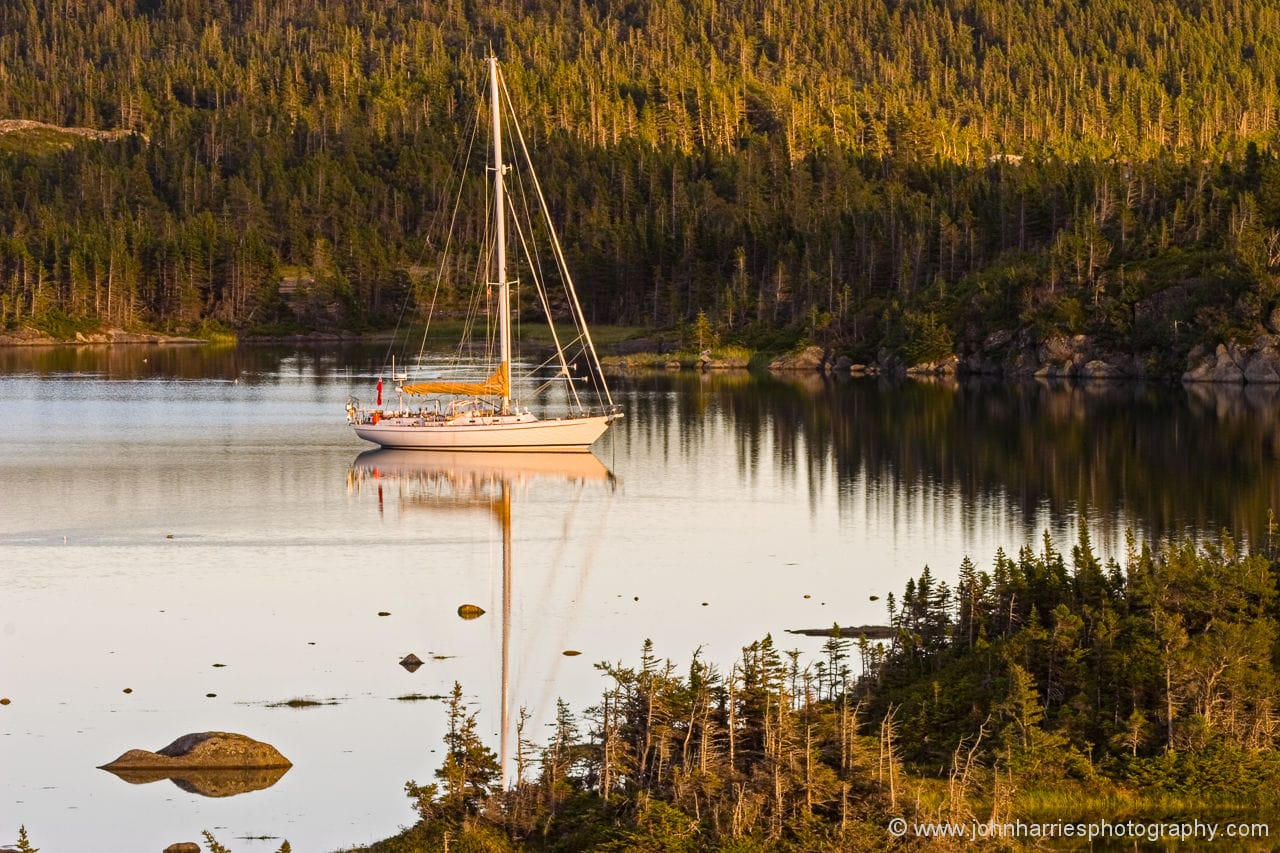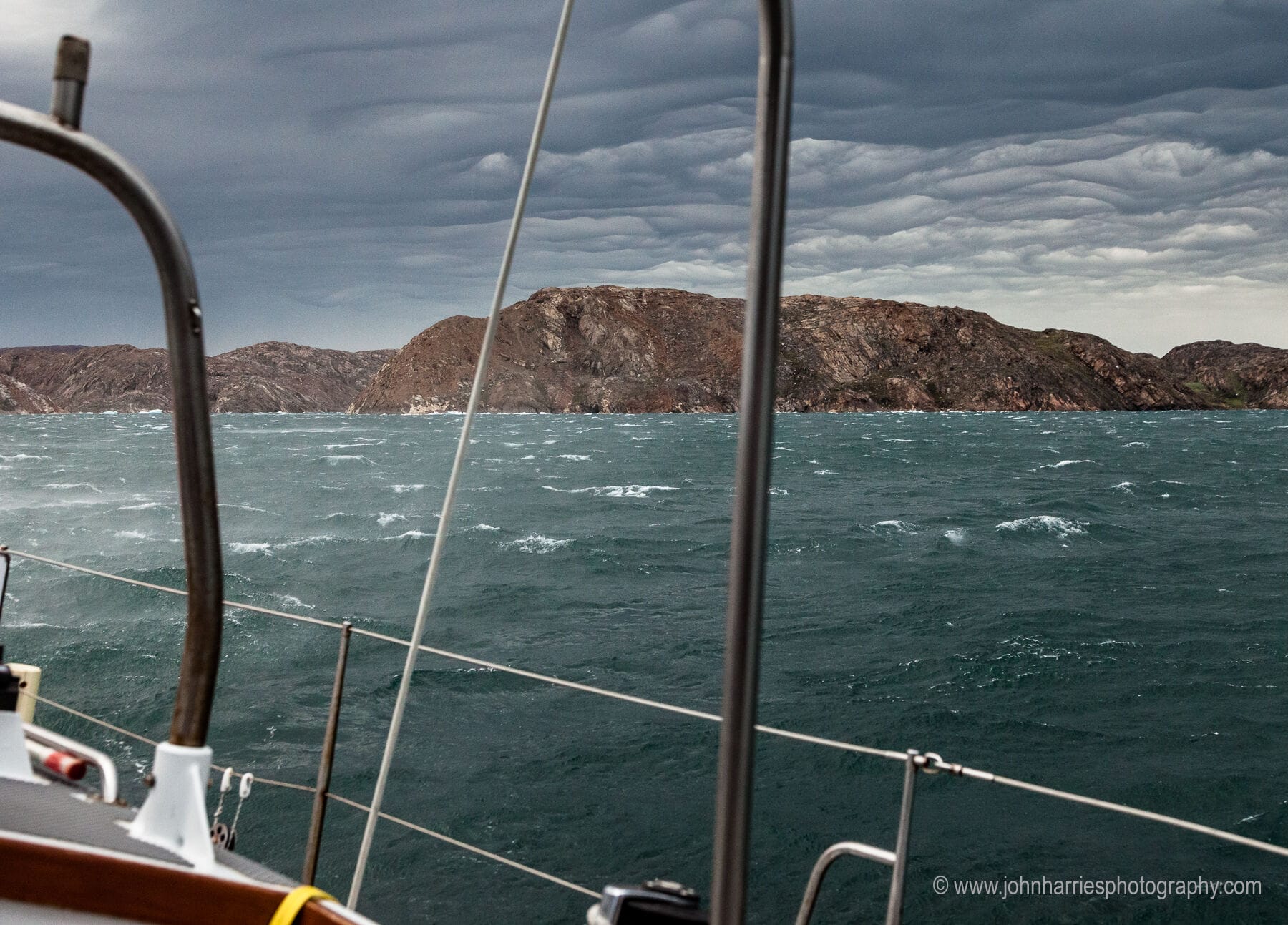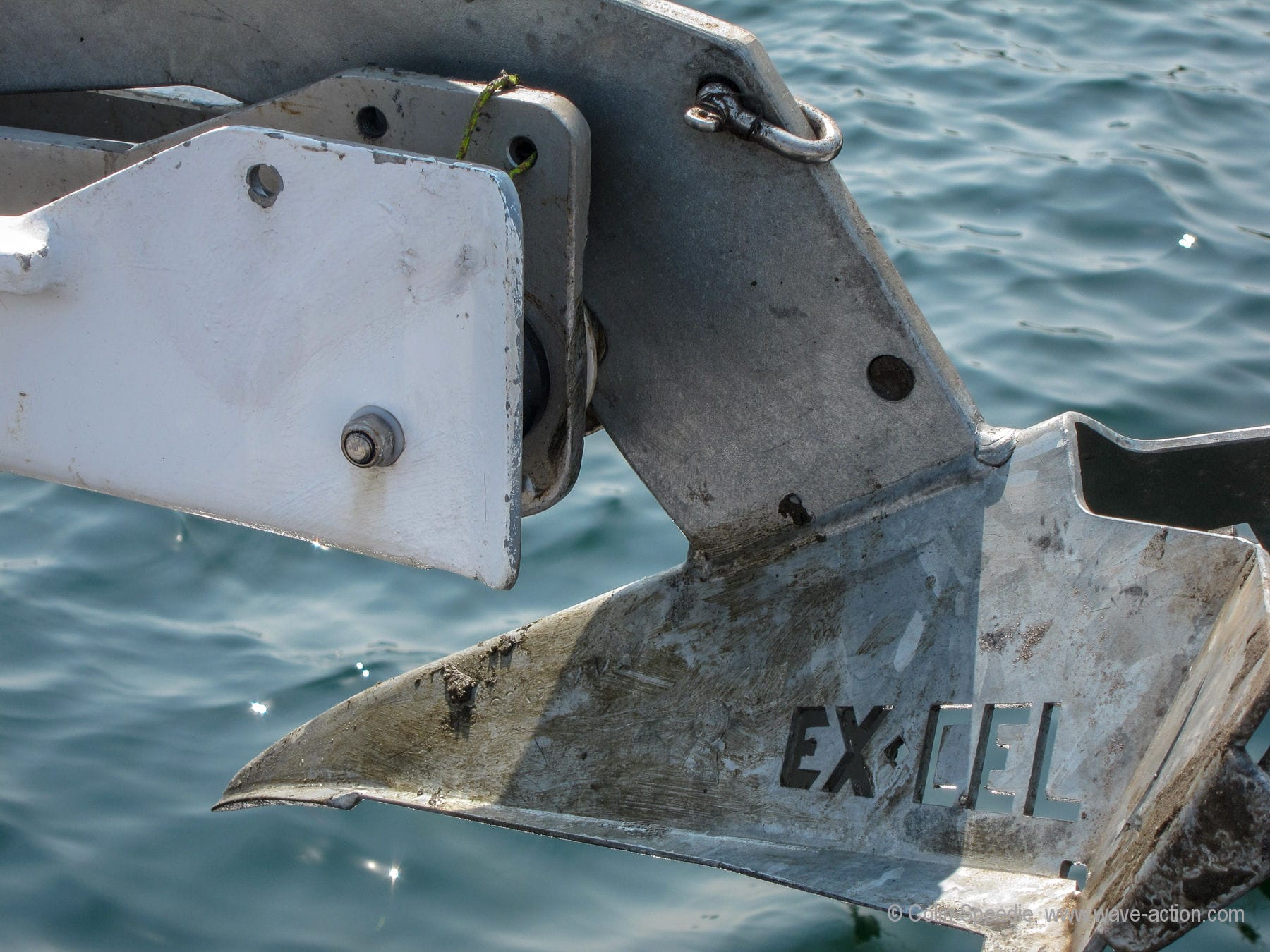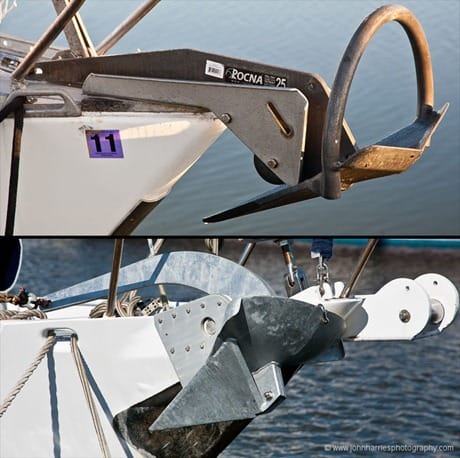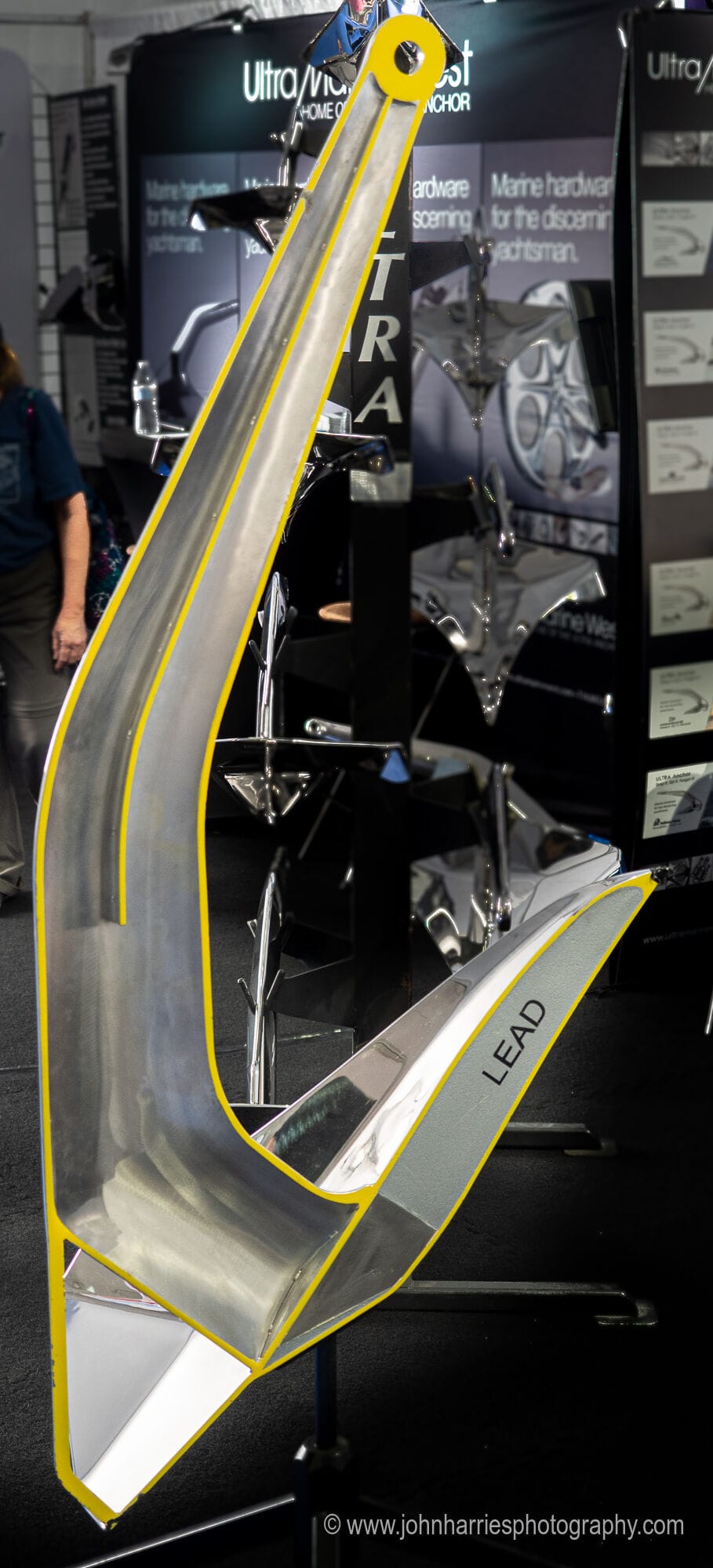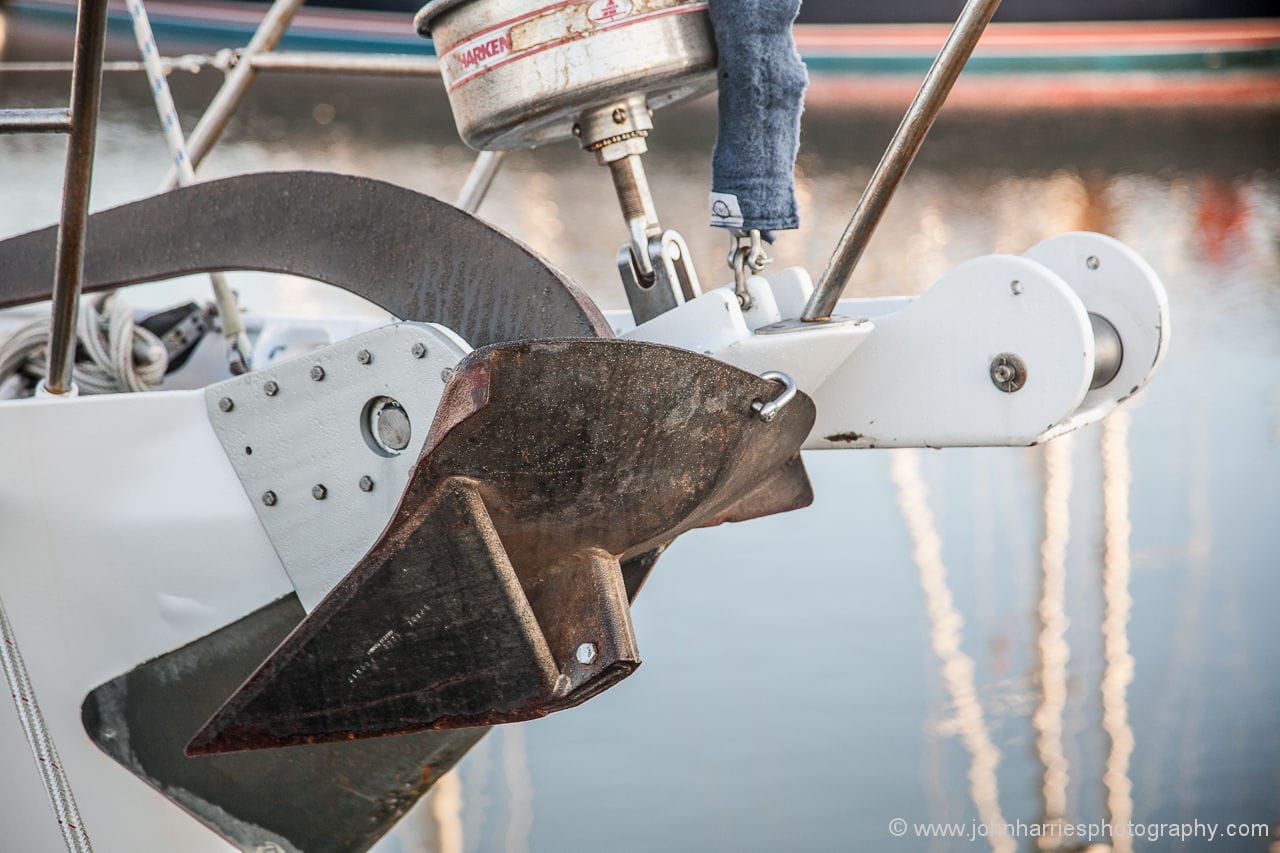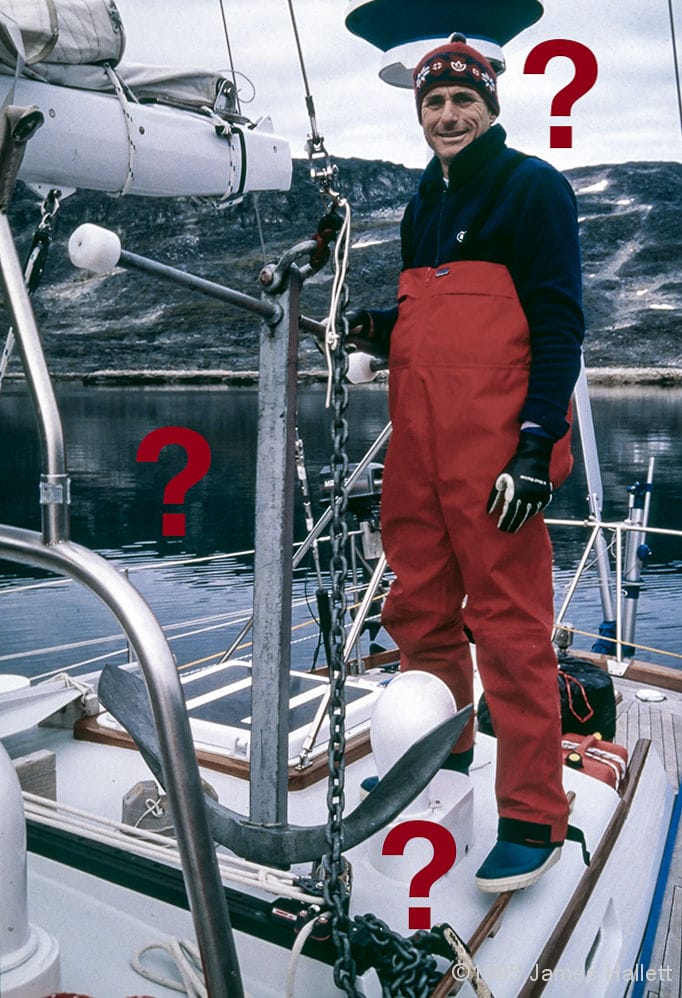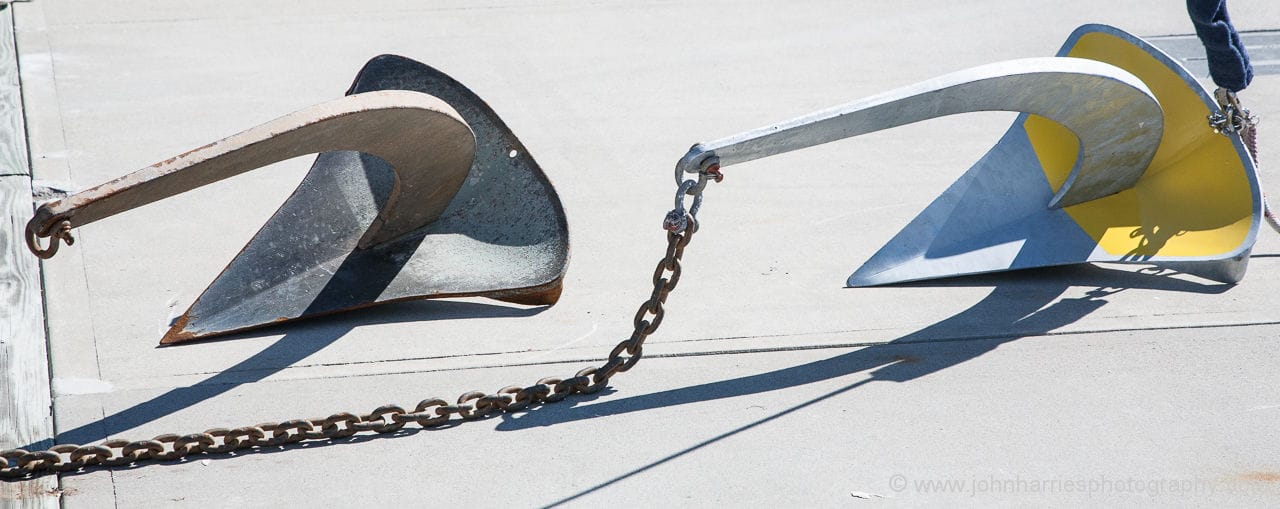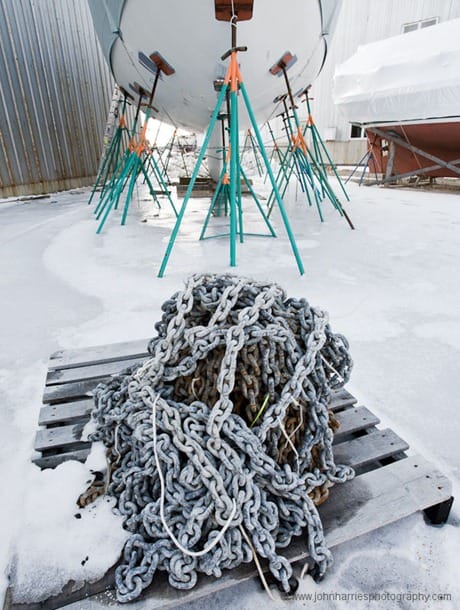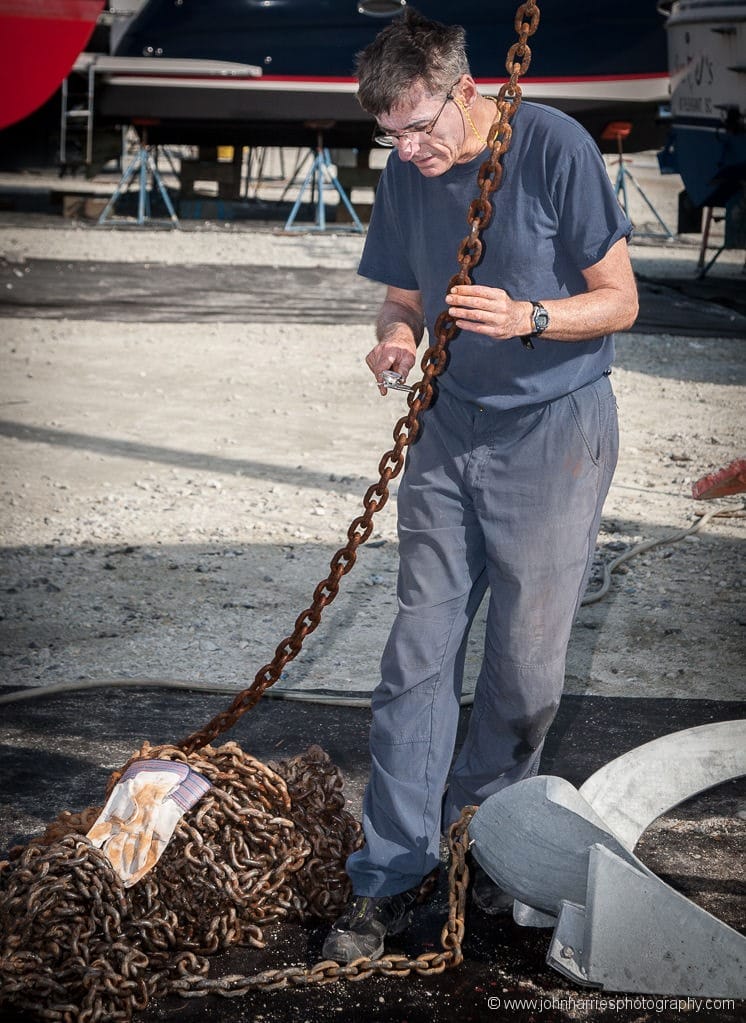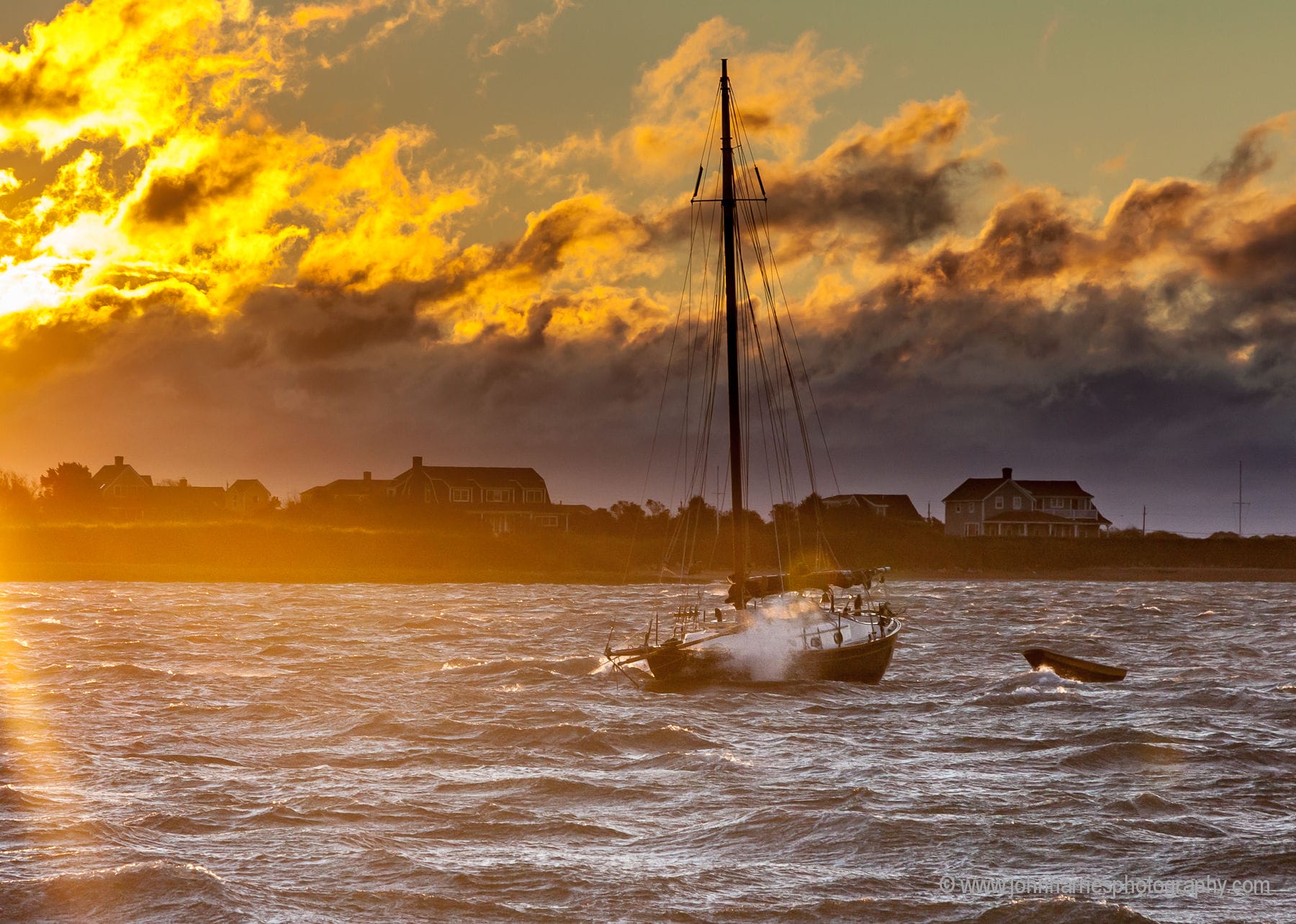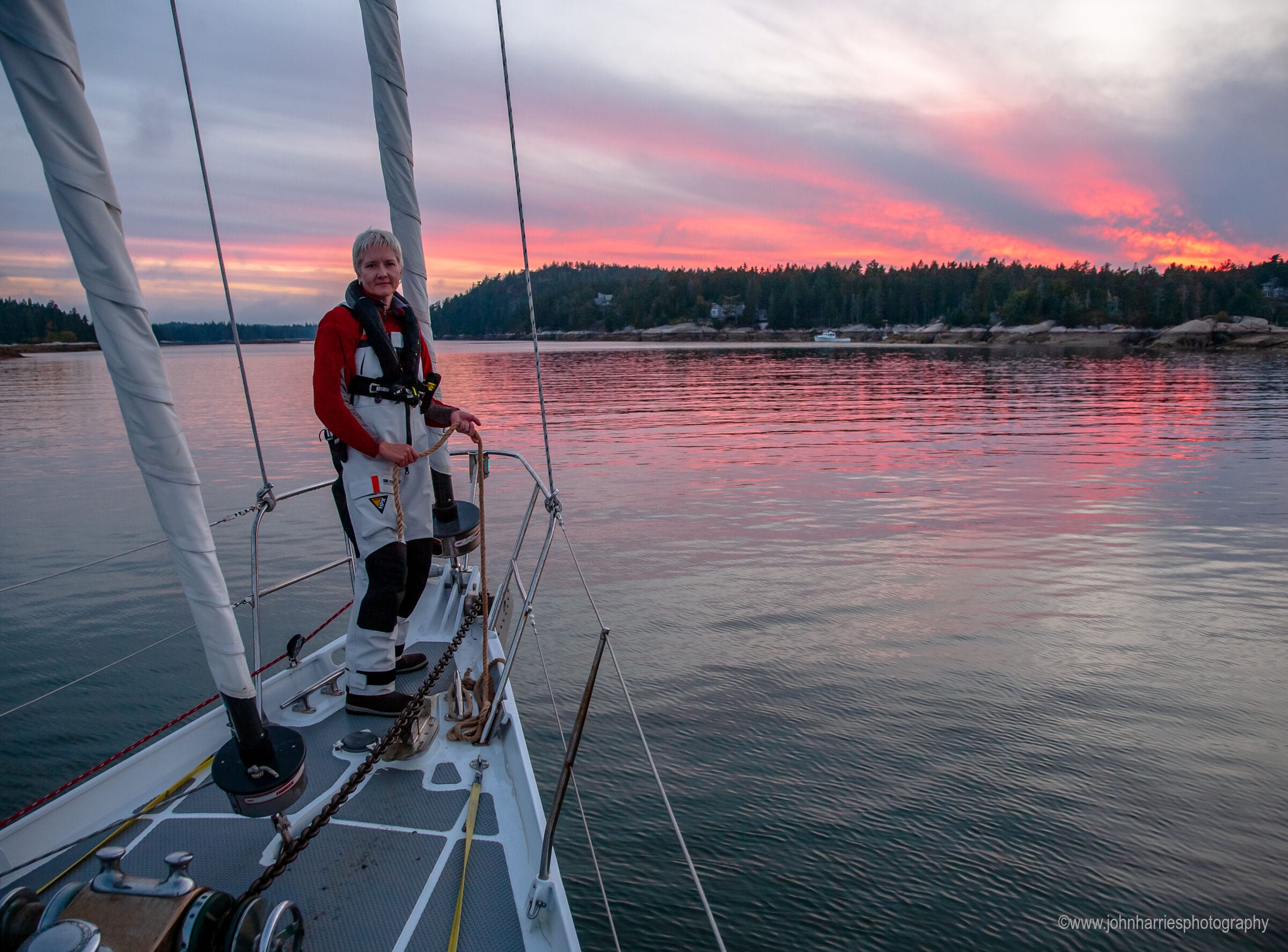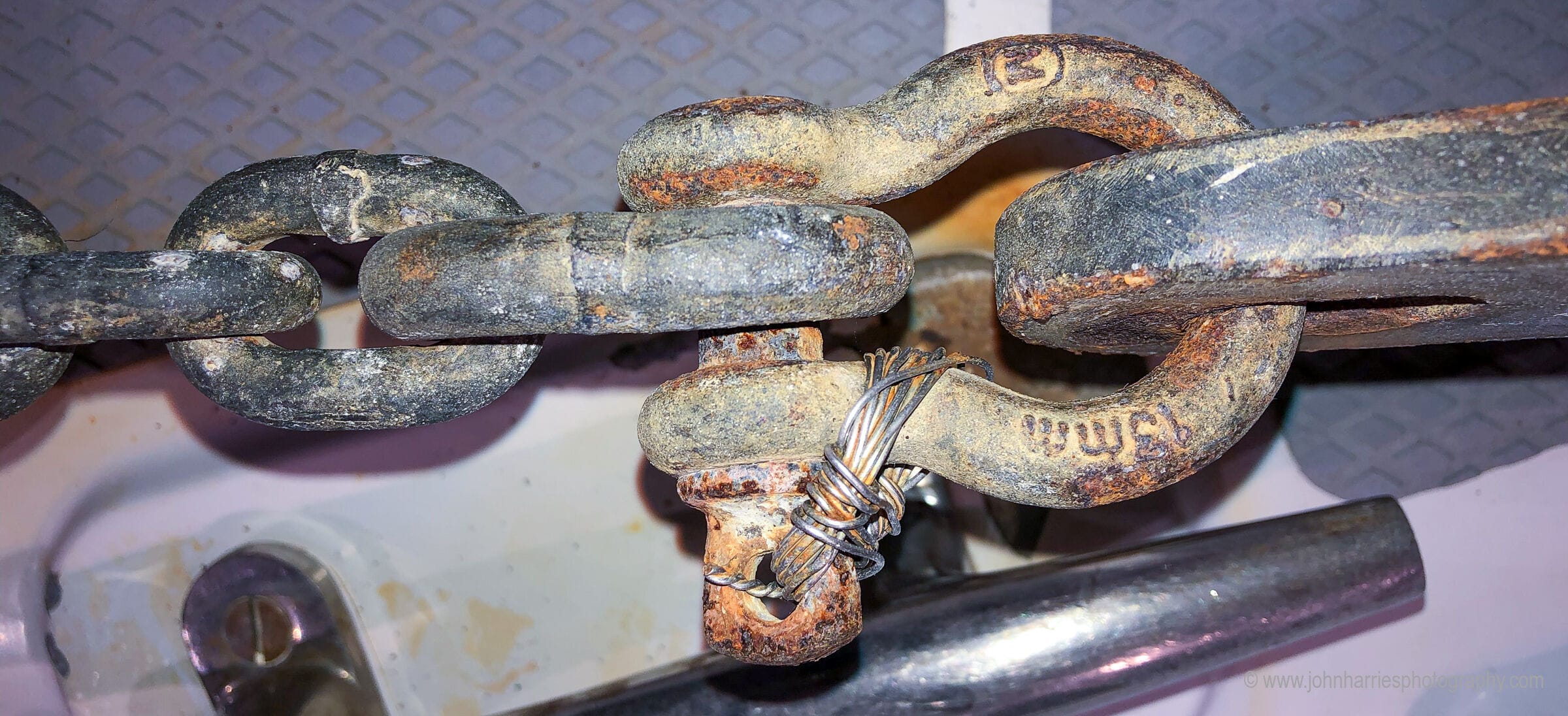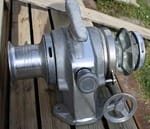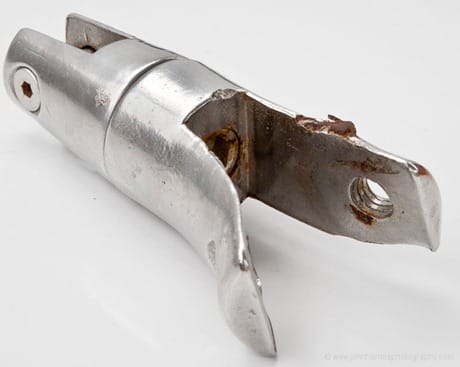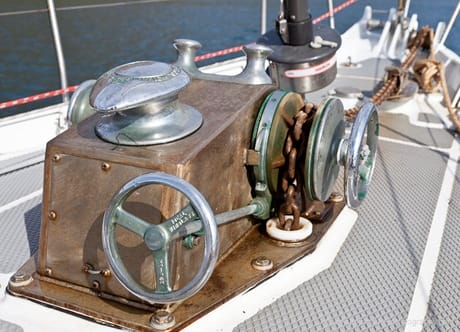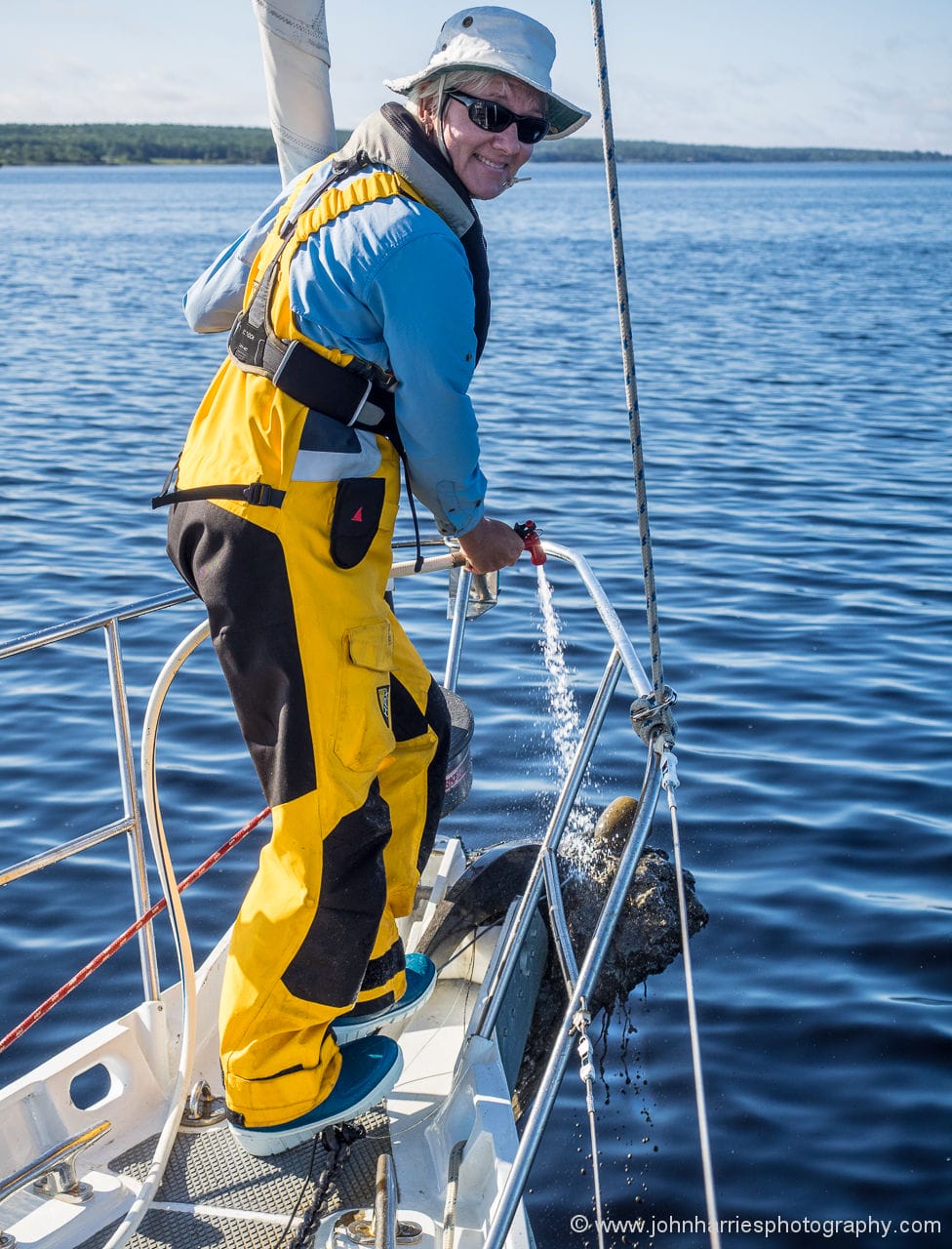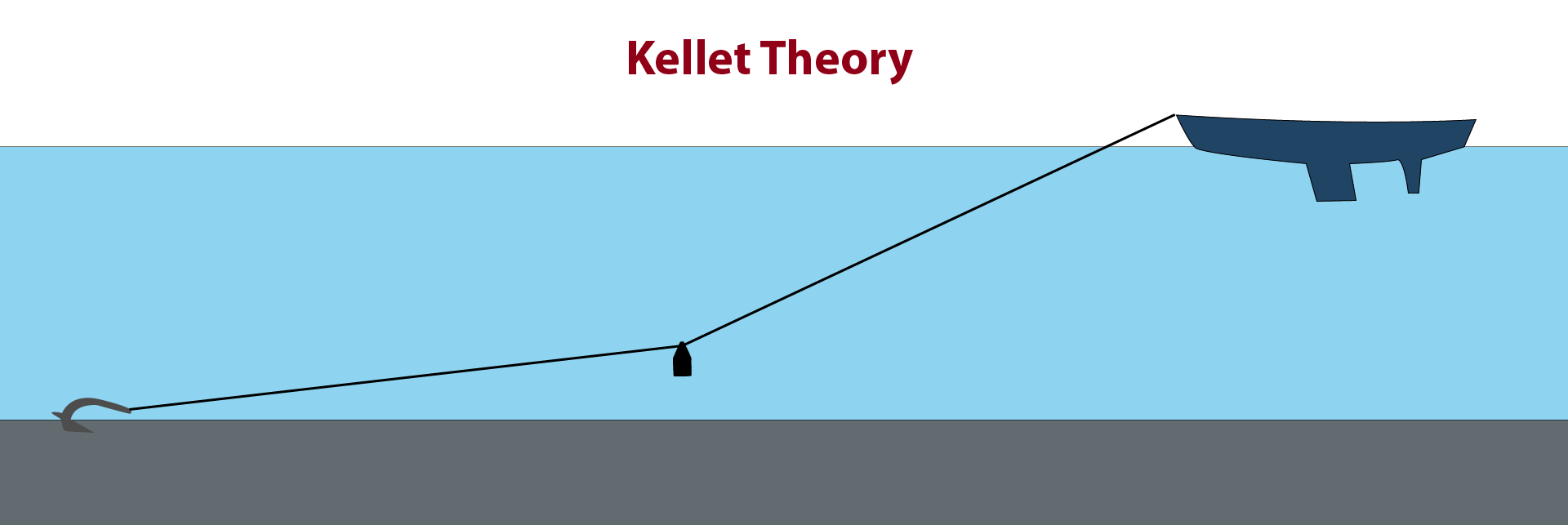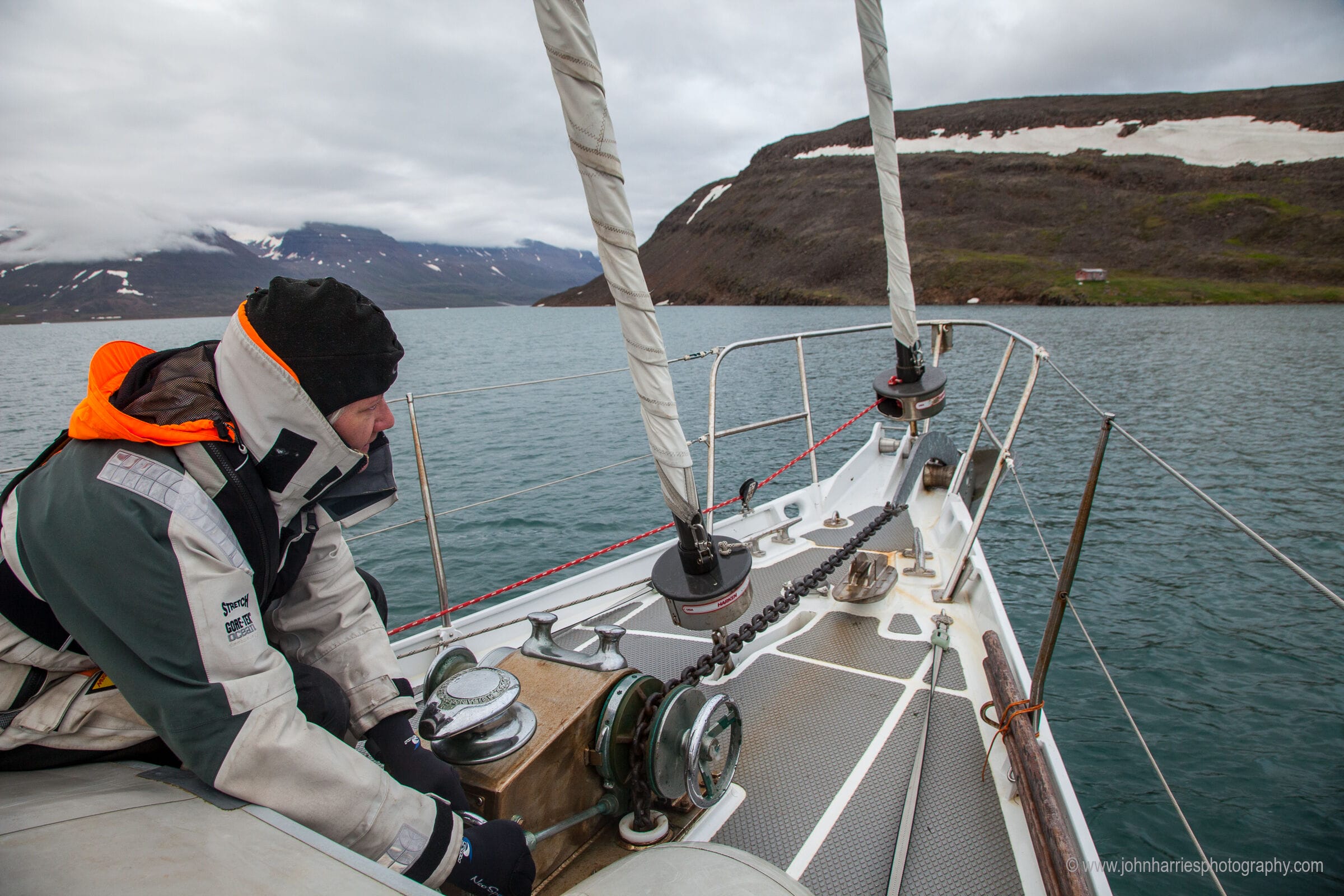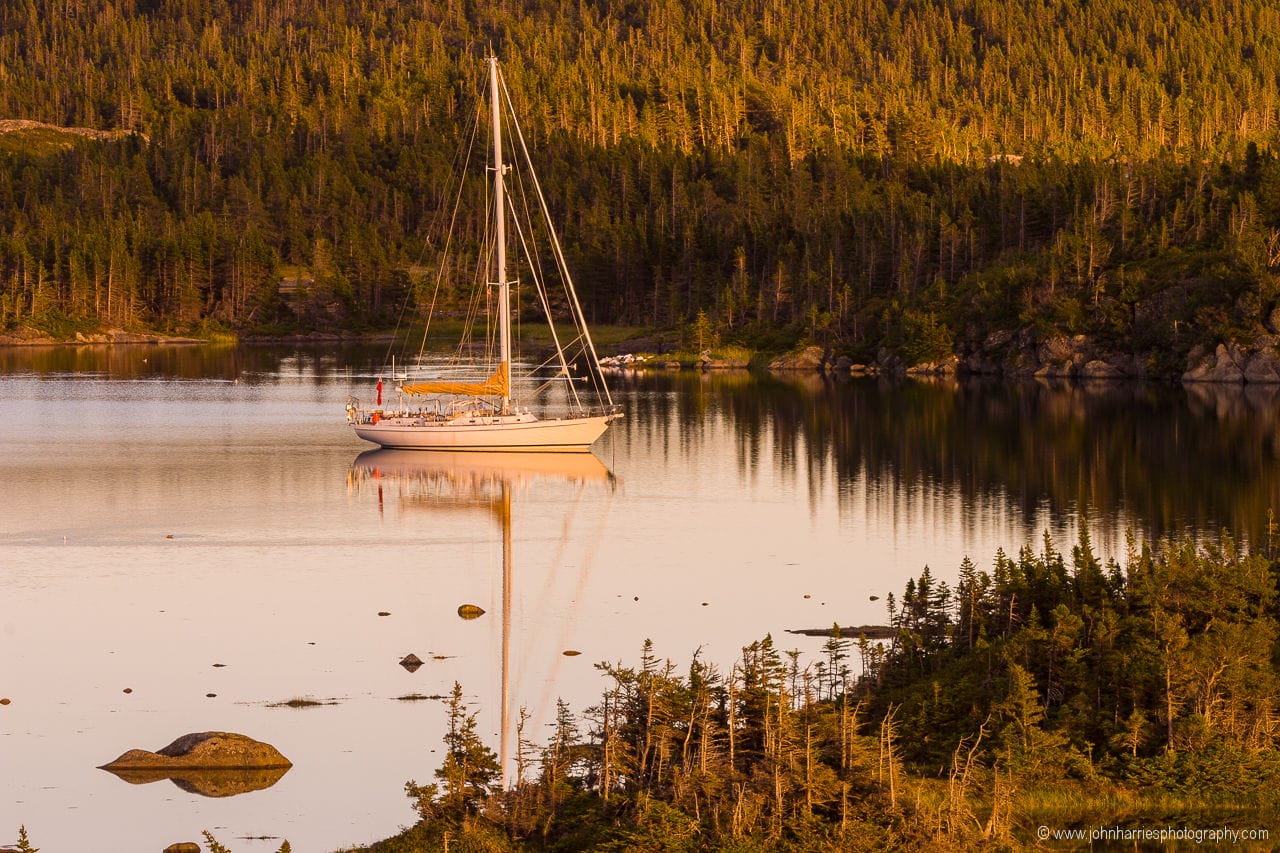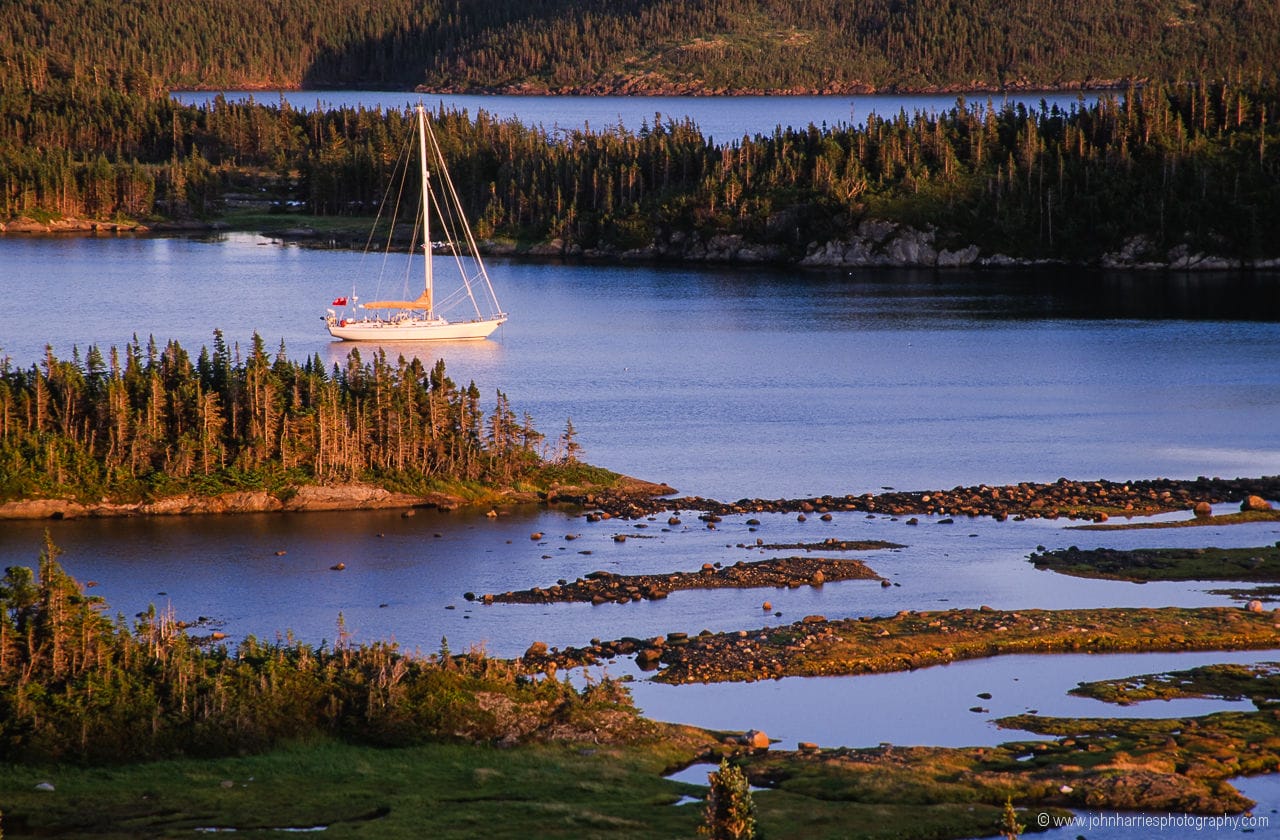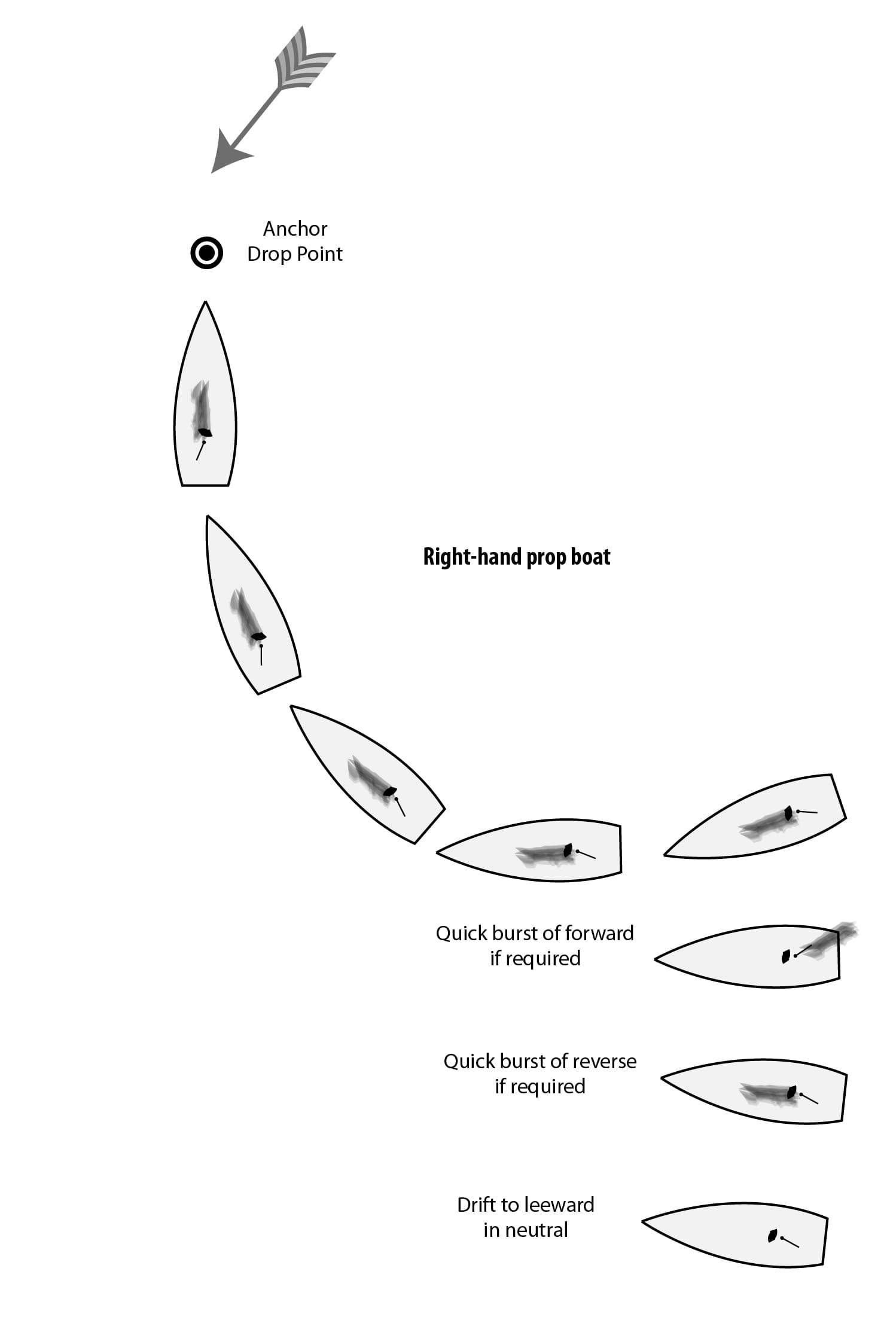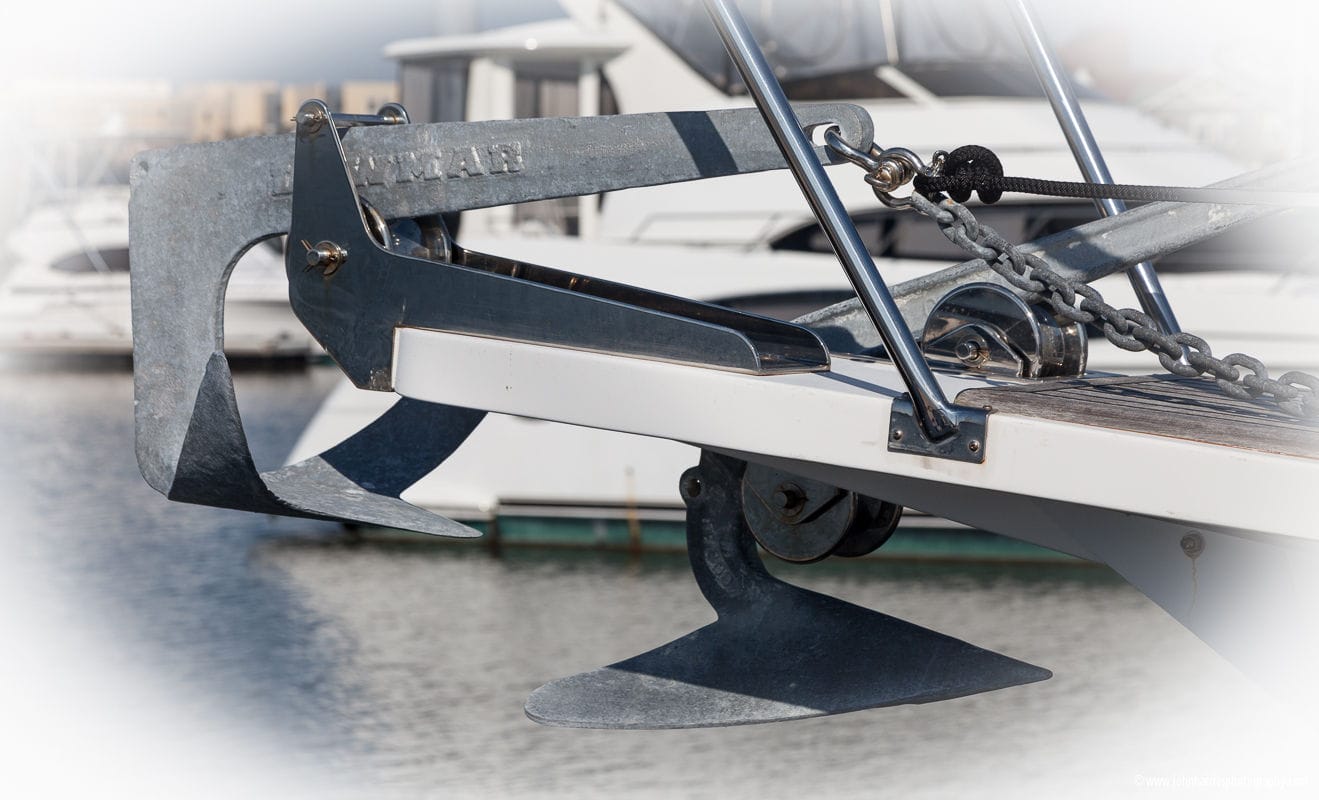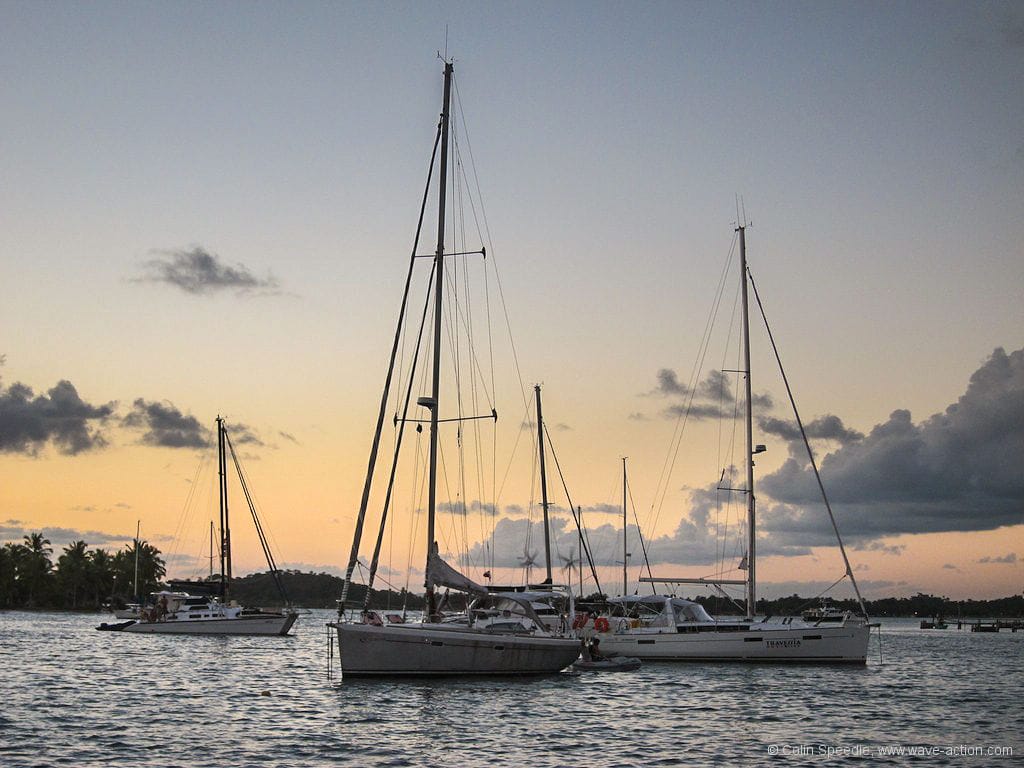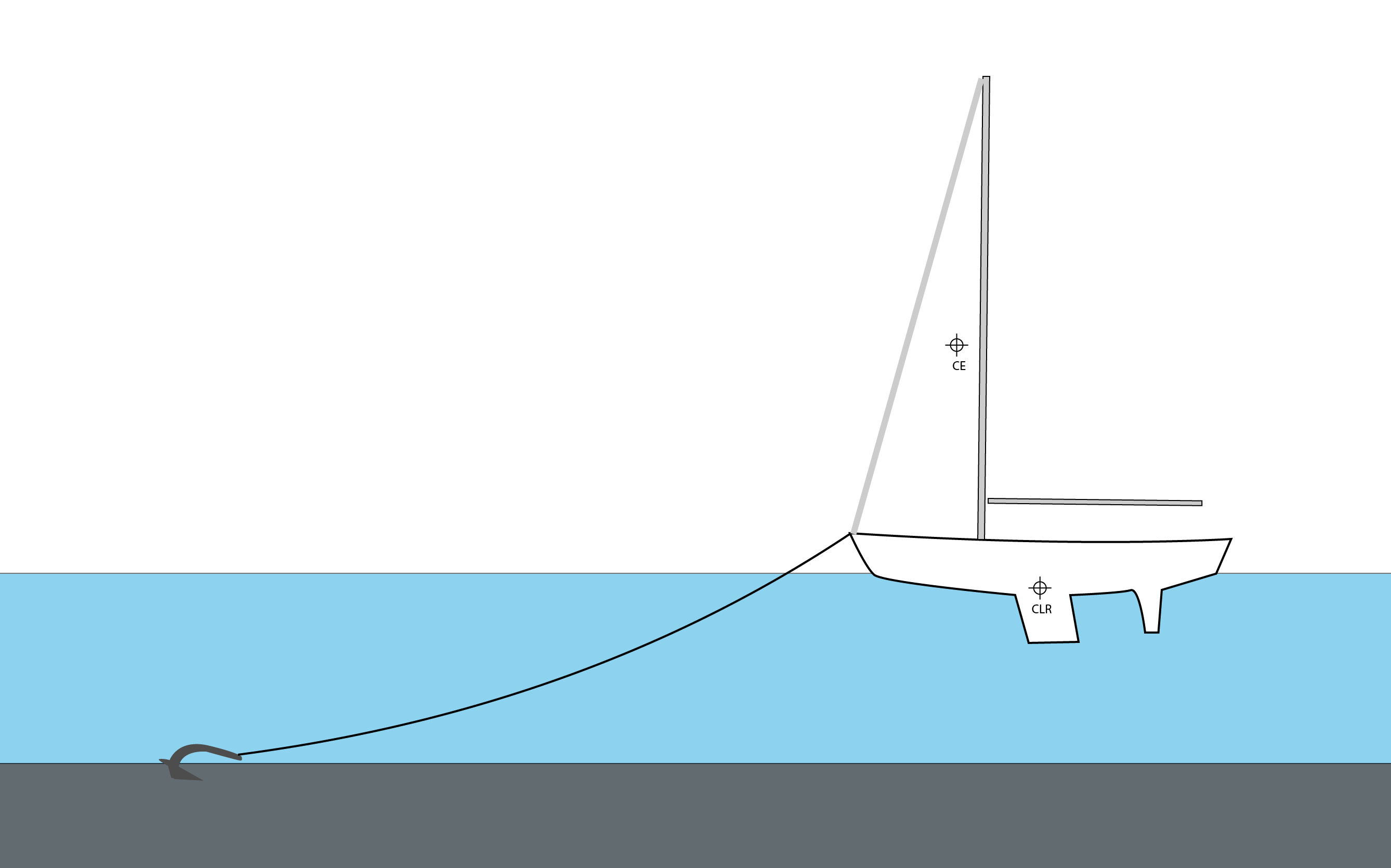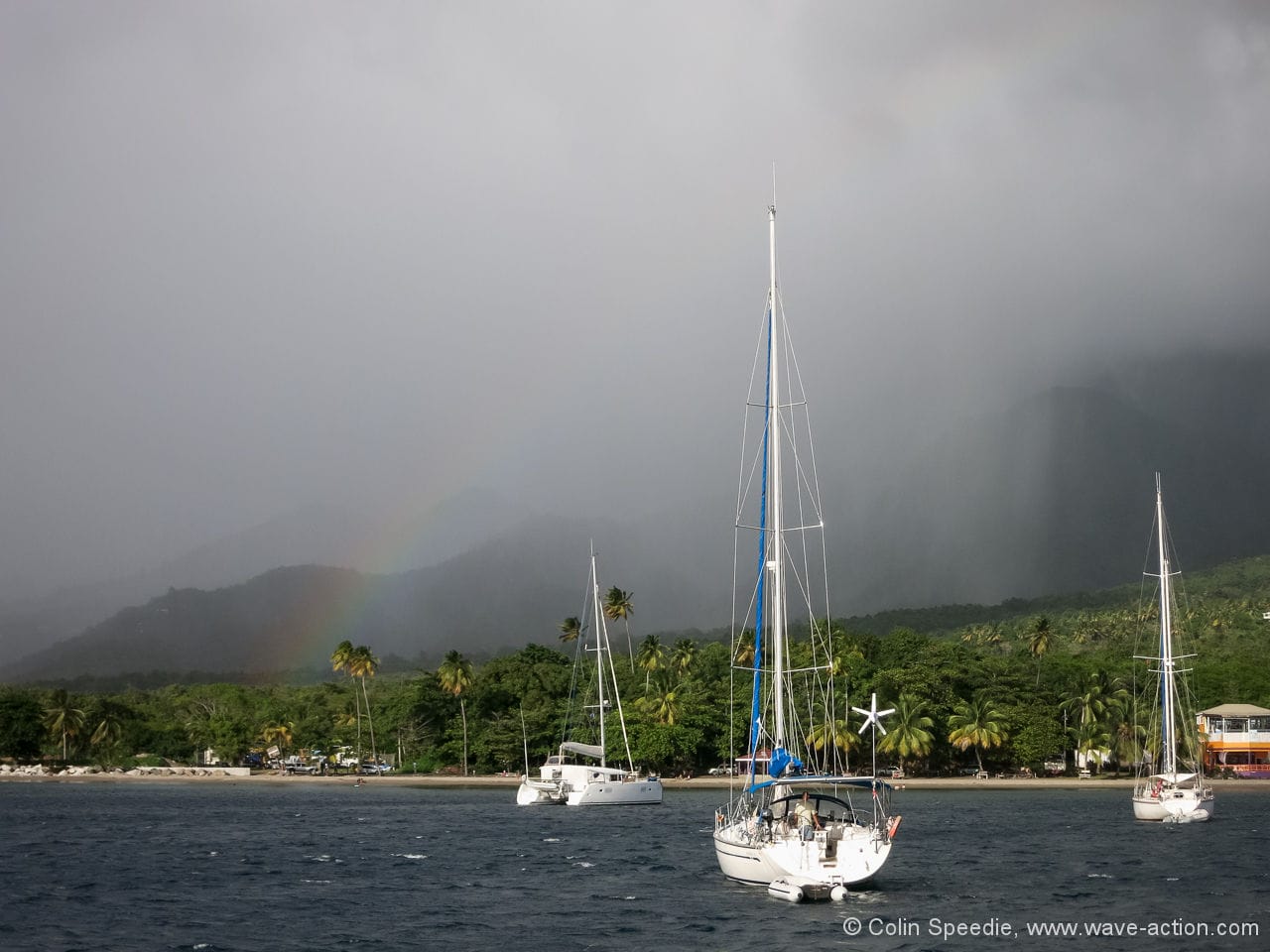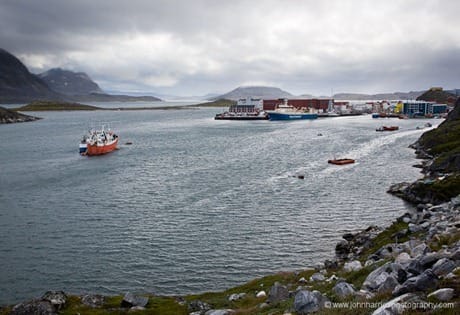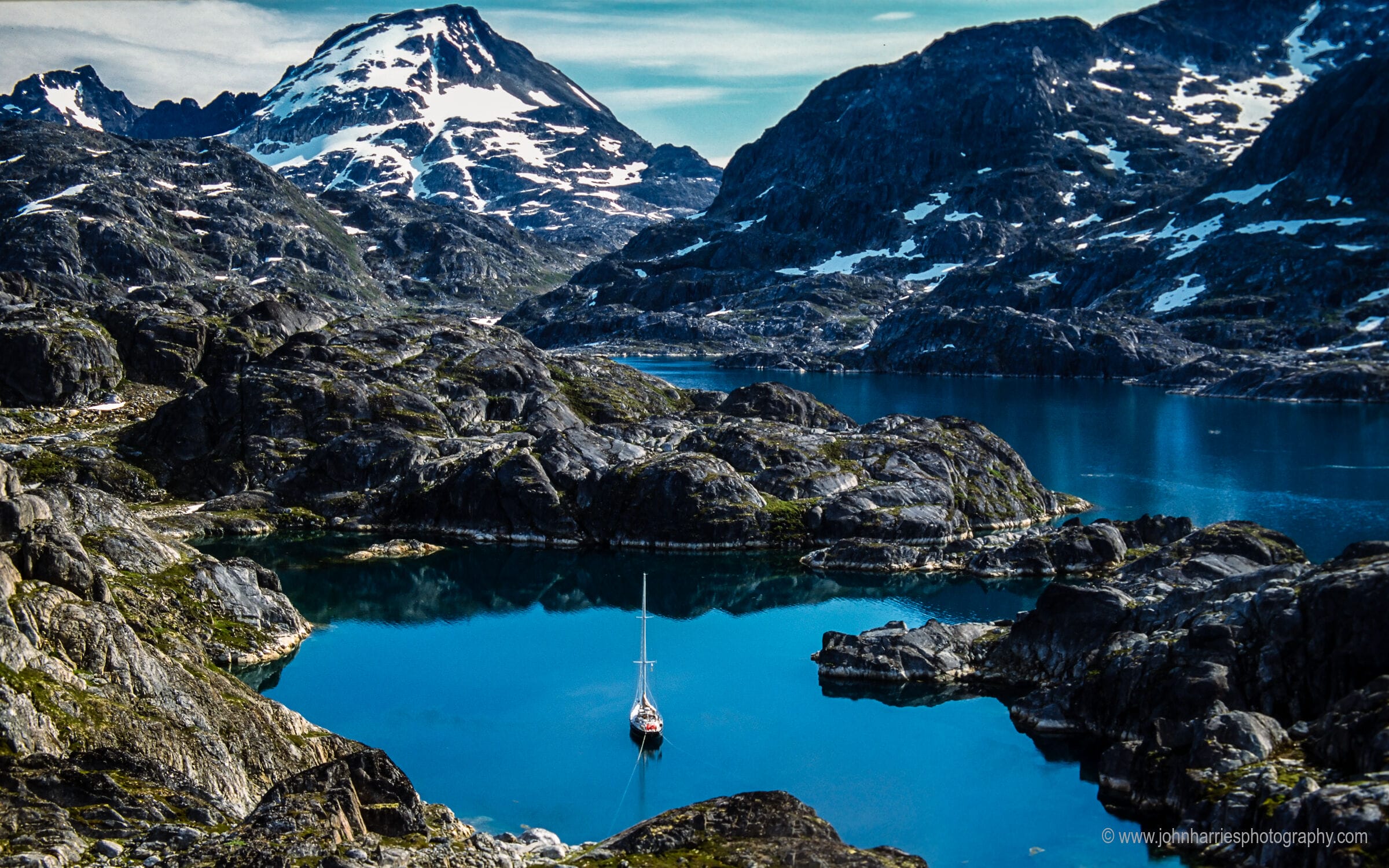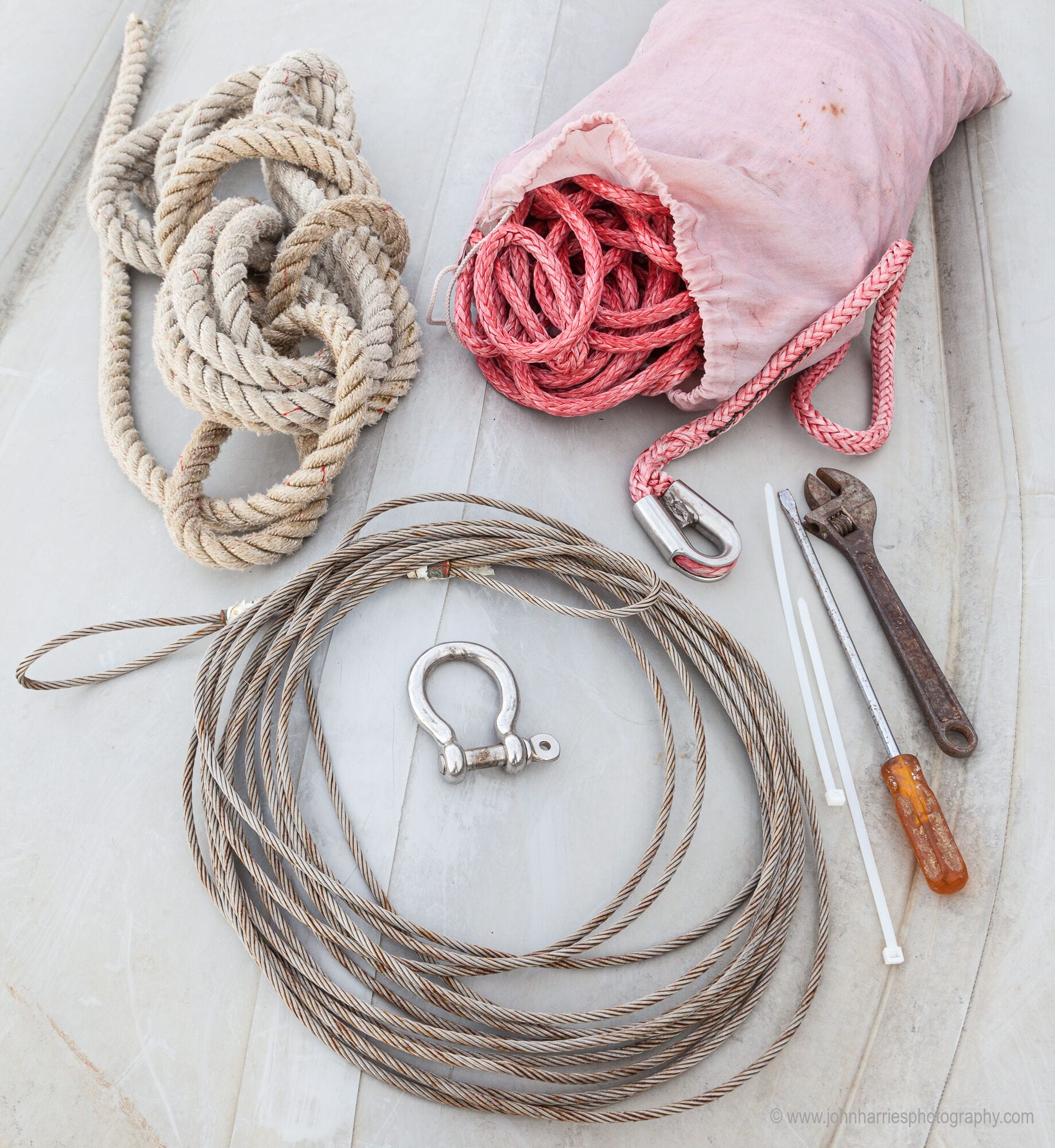Online Book: Anchoring Made Easy
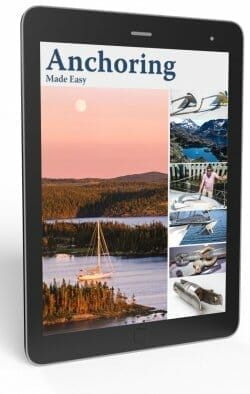
There are few activities in the voyaging life that cause more anxiety and stress than anchoring. John and Colin share what they have learned in a combined century of anchoring from Greenland to Brazil, as well as a lot of places between. Information that truly makes anchoring easy.
Click for TOC or scroll down for details
Articles in this topic:
- Introduction
- 4 Vital Anchor Selection Criteria and a Review of SPADE
- SARCA Excel Anchor—A Real World Test
- SPADE, SARCA Excel, or Some Other Anchor?
- Rocna Resetting Failures and Evaluation of Vulcan and Mantus
- Ultra Anchor Review
- Specifying Primary Anchor Size
- Kedge (Secondary Anchor)—Recommended Type and Size
- Third Anchors, Storm Anchors and Spare Anchors
- Anchor Tests—The Good, The Bad, and The Downright Silly
- Making Anchor Tests More Meaningful
- We Love The Way Our Anchor Drags
- Things to Know About Anchor Chain
- Selecting a Chain Grade
- Anchor Chain Catenary, When it Matters and When it Doesn’t
- Anchoring—Snubbers
- Anchor Rode Questions and Answers
- Q&A: Hybrid Rope And Chain Anchor Rodes
- Anchor Swivels, Just Say No
- A Windlass That Makes The Grade
- The Perfect Anchor Roller
- Install A Wash-down Pump—And Save Money!
- Anchoring—Kellets
- Anchoring—Chain: Stoppers, Termination and Marking
- 20 Tips To Get Anchored and Stay Anchored
- Choosing an Anchorage
- Choosing a Spot
- 15 Steps To Getting Securely Anchored
- One Anchor or Two?
- Two Anchors Done Right
- Yawing at Anchor, The Theory and The Solution
- Yawing at The Anchor, an Alternative Cure
- How To Use An Anchor Trip Line
- ShoreFasts—Part 1, When to Use Them
- ShoreFasts—Part 2, Example Setups Plus Tips and Tricks
- ShoreFasts—Part 3, The Gear
- A Small-Boat Anchoring System
-
Introduction
10 CommentsReading Time: 3 minutesFreeRead more: IntroductionLearn why this Online Book is worth your time and will change your cruising life for the better.
-
4 Vital Anchor Selection Criteria and a Review of SPADE
147 CommentsReading Time: 12 minutesFreeRead more: 4 Vital Anchor Selection Criteria and a Review of SPADEEveryone loves to tout the benefits of their favourite anchor, John included, but this article is about much more: how to cut through all the claims to the criteria that really matter when selecting an anchor.
-
SARCA Excel Anchor—A Real World Test
57 CommentsReading Time: 11 minutesMembersRead more: SARCA Excel Anchor—A Real World TestColin’s in-depth, real-world test and review of the SARCA Excel anchor, based on a season of use in a cruising ground that is notoriously difficult to anchor in.
-
SPADE, SARCA Excel, or Some Other Anchor?
40 CommentsReading Time: 6 minutesMembersRead more: SPADE, SARCA Excel, or Some Other Anchor?In the last two chapters we have reviewed the SPADE and SARCA Excel anchors. So which of the two is best, and are there other anchors as good or better? We also cover four anchors we should never use.
-
Rocna Resetting Failures and Evaluation of Vulcan and Mantus
316 CommentsReading Time: 6 minutesMembersRead more: Rocna Resetting Failures and Evaluation of Vulcan and MantusWhen an anchor that thousands of sailors rely on has a dangerous flaw, we need to write about that. Also, some thoughts on the the Vulcan and the Mantus anchors.
-
Ultra Anchor Review
158 CommentsReading Time: 6 minutesMembersRead more: Ultra Anchor ReviewJohn spent some time at the Ultra Anchor booth at the boat show. There were things he liked about the anchor, and one that he didn’t.
-
Specifying Primary Anchor Size
193 CommentsReading Time: 7 minutesMembersRead more: Specifying Primary Anchor SizeHow to select the size and material (galvanized steel, stainless steel or aluminium), for the primary anchor on a cruising boat.
-
Kedge (Secondary Anchor)—Recommended Type and Size
61 CommentsReading Time: 7 minutesMembersRead more: Kedge (Secondary Anchor)—Recommended Type and SizeThe second most important anchor on our boats after the best bower is the kedge. What type should it be and how big? We make it simple.
-
Third Anchors, Storm Anchors and Spare Anchors
23 CommentsReading Time: 6 minutesMembersRead more: Third Anchors, Storm Anchors and Spare AnchorsAfter we have bought our best bower (primary anchor) and kedge, what should our third anchor be? The logical answer will surprise you…as it did me.
-
Anchor Tests—The Good, The Bad, and The Downright Silly
44 CommentsReading Time: 6 minutesMembersRead more: Anchor Tests—The Good, The Bad, and The Downright SillyWe sailors love to talk about anchor tests, and yes, they are useful, but never forget that they are all fundamentally flawed.
-
Making Anchor Tests More Meaningful
125 CommentsReading Time: 10 minutesMembersRead more: Making Anchor Tests More MeaningfulJohn starts with testing from “SV Panope”, adds a large dollop of experience, and comes up with his own best anchor table as well as demonstrating how you can do the same.
-
We Love The Way Our Anchor Drags
62 CommentsReading Time: 4 minutesMembersRead more: We Love The Way Our Anchor DragsJohn explores a little-known selection criteria that every anchor buyer should know about.
-
Things to Know About Anchor Chain
98 CommentsReading Time: 4 minutesMembersRead more: Things to Know About Anchor ChainThere are probably more misconceptions and just plain wrong information circulating about anchor chain than most any other piece of cruising gear. For this chapter I went to the experts at Peerless Chain to get the real facts.
-
Selecting a Chain Grade
205 CommentsReading Time: 6 minutesMembersRead more: Selecting a Chain GradeIn the last chapter on chain we looked at the three grades of chain normally used for anchor rodes on cruising sailboats. In this chapter we carry on from that base and examine the trade-offs between the grades and the things that you need to know when selecting the right anchor chain and gauge for your boat.
-
Anchor Chain Catenary, When it Matters and When it Doesn’t
106 CommentsReading Time: 7 minutesMembersRead more: Anchor Chain Catenary, When it Matters and When it Doesn’tThere are two opposing views on chain catenary: those who believe that having a lot of chain on the bottom increases holding, and those who have observed an all chain rode being pulled bar straight in any winds above about 30 knots and therefore hold that catenary does nothing useful in anchoring. Who is right? Read on to find out, and also for John’s recommendation for the best chain grade to use.
-
Anchoring—Snubbers
127 CommentsReading Time: 10 minutesMembersRead more: Anchoring—SnubbersRope snubbers are vital for those of us who anchor on all-chain rodes, but the good news is that a good snubber is a simple thing to make and rig right.
-
Anchor Rode Questions and Answers
62 CommentsReading Time: 2 minutesMembersRead more: Anchor Rode Questions and AnswersOver the years we have answered many questions about putting together a good anchor rode. In this chapter we have gathered some of those answers together.
-
Q&A: Hybrid Rope And Chain Anchor Rodes
48 CommentsReading Time: 2 minutesMembersRead more: Q&A: Hybrid Rope And Chain Anchor RodesMany anchoring experts advocate hybrid anchor rodes made up of a long length of chain attached to an even longer piece of rope. But is this really a good idea? We examine the practical real world issues in this chapter.
-
Anchor Swivels, Just Say No
58 CommentsReading Time: 3 minutesMembersRead more: Anchor Swivels, Just Say NoWe have never seen the point of anchor swivels. In our opinion all they do is add a potential point of failure to the anchoring system and provide no benefits in return. But they are, in fact, even more dangerous than we thought. In this chapter we explain why and even tell you how to ameliorate the danger if you really must have a swivel.
-
A Windlass That Makes The Grade
94 CommentsReading Time: 4 minutesMembersRead more: A Windlass That Makes The GradeMost windlasses fitted to production cruising boats are simply inadequate and can leave you in very deep yogurt when things go wrong. In this chapter we show you what to look for in a good windlass and tell you about a feature, the lack of which contributes to about half of the dragging incidences we see.
-
The Perfect Anchor Roller
96 CommentsReading Time: 11 minutesMembersRead more: The Perfect Anchor RollerThere are few pieces of gear on many voyaging boats that are as poorly designed as the anchor roller. But it doesn’t have to be that way.
-
Install A Wash-down Pump—And Save Money!
53 CommentsReading Time: 5 minutesMembersRead more: Install A Wash-down Pump—And Save Money!Want to save money when cruising? John divulges a surprising way to do just that.
-
Anchoring—Kellets
39 CommentsReading Time: 6 minutesMembersRead more: Anchoring—KelletsKellets are often touted in books and articles on anchoring as a way to increase anchor holding and setting reliability. But do they really work, and should you buy one?
-
Anchoring—Chain: Stoppers, Termination and Marking
98 CommentsReading Time: 9 minutesMembersRead more: Anchoring—Chain: Stoppers, Termination and MarkingIf ever there was a subject where the details matter, it’s anchoring, so John takes a deep dive into some details that will make anchoring with an all-chain rode easier and safer.
-
20 Tips To Get Anchored and Stay Anchored
57 CommentsReading Time: 3 minutesMembersRead more: 20 Tips To Get Anchored and Stay AnchoredYou can have the best anchors and associated gear available, but if you don’t use that gear properly you won’t get anchored and stay anchored. In this post we carry on from Part 1 with some tips for techniques to help make you a happy anchorer.
-
Choosing an Anchorage
12 CommentsReading Time: 3 minutesMembersRead more: Choosing an AnchorageDeciding where to seek shelter with a storm on the way, particularly when far from home and in unfamiliar waters, can be one of the most stressful calls we voyagers are called upon to make. John shares his decision making process when choosing an anchorage to ride out a fall storm.
-
Choosing a Spot
29 CommentsReading Time: 5 minutesMembersRead more: Choosing a SpotIn this chapter John outlines the steps he takes to get Morgan’s Cloud anchored in the right spot the first time.
-
15 Steps To Getting Securely Anchored
55 CommentsReading Time: 10 minutesFreeRead more: 15 Steps To Getting Securely AnchoredWhen thinking about anchoring, it’s easy to just focus on gear, but good technique can contribute at least as much to getting securely anchored. These steps, based on 40 years of experience, make getting securely anchored easy and repeatable.
-
One Anchor or Two?
128 CommentsReading Time: 6 minutesMembersRead more: One Anchor or Two?John answers the question of whether to use one anchor or two.
-
Two Anchors Done Right
29 CommentsReading Time: 7 minutesMembersRead more: Two Anchors Done RightColin discusses how to set two anchors when there is no other way to anchor safely.
-
Yawing at Anchor, The Theory and The Solution
112 CommentsReading Time: 10 minutesMembersRead more: Yawing at Anchor, The Theory and The SolutionThere are few subjects around anchoring that get more discussion than stopping yawing at anchor. However, once we understand why it happens, the best solution becomes obvious.
-
Yawing at The Anchor, an Alternative Cure
90 CommentsReading Time: 8 minutesMembersRead more: Yawing at The Anchor, an Alternative CureDoes your boat swing violently back and forth at anchor when the wind is up? Colin has a solution that is simple, inexpensive, and easy to rig.
-
How To Use An Anchor Trip Line
27 CommentsReading Time: 3 minutesMembersRead more: How To Use An Anchor Trip LineJohn writes about how we rig an anchor trip line on Morgan’s Cloud.
-
ShoreFasts—Part 1, When to Use Them
40 CommentsReading Time: 11 minutesMembersRead more: ShoreFasts—Part 1, When to Use ThemMany people assume that tying to the solid land with shorefasts is safer and more secure than anchoring. But is it really? John takes a deep dive into the facts and in the process shares some interesting things about shorefasts and how to use them.
-
ShoreFasts—Part 2, Example Setups Plus Tips and Tricks
27 CommentsReading Time: 13 minutesMembersRead more: ShoreFasts—Part 2, Example Setups Plus Tips and TricksIn Part 1 I covered the physics that govern the loads shorefast are subjected to. Now let’s move on to some example configurations and then some fun stuff: tips, tricks and hacks that make putting in shorefasts safer and easier.
-
ShoreFasts—Part 3, The Gear
34 CommentsReading Time: 10 minutesMembersRead more: ShoreFasts—Part 3, The GearIn Parts 1 and 2 I covered when to use shorefasts, the risks of doing so, and shorefast setups, as well as sharing some tips and tricks to make putting them in easier. Now let’s take a look at the gear Phyllis and I carry on Morgan’s Cloud, as well as what you need if you aspire to being a competent shorefast user.
-
A Small-Boat Anchoring System
36 CommentsReading Time: 10 minutesMembersRead more: A Small-Boat Anchoring SystemMost of the chapters in this Online Book are about anchoring systems for larger boats. But what about smaller boats? What compromises can we make and still end up with a safe and workable system?

